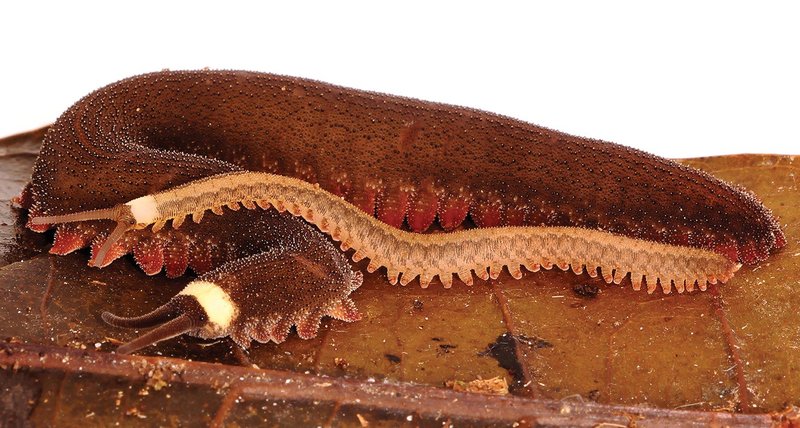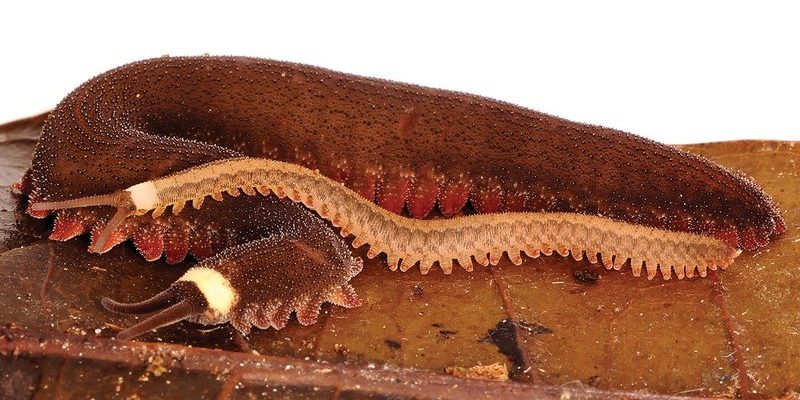
Let’s think of *indigenous knowledge* as a treasure chest filled with wisdom that has been gathered through generations. This knowledge is shaped by experiences and relationships with nature. Velvet worms, often overlooked, play a significant part in this vast world of understanding. You might be wondering how a small, elusive creature becomes a pivotal piece in the larger puzzle of cultural heritage and ecological wisdom. Let’s dive deeper!
What Are Velvet Worms?
Velvet worms, or *Onychophora*, are an ancient group of arthropods that might just blow your mind. They’re a bit like time travelers, having been around for roughly 500 million years! Found primarily in humid, tropical regions, these creatures live in leaf litter and decaying wood. They have a soft, velvety body and can grow up to 15 centimeters long, depending on the species.
Interestingly, velvet worms have a unique way of hunting. They produce a sticky slime that can ensnare unsuspecting prey, usually insects. Imagine shooting a web out like Spider-Man, but instead of a web, it’s a gooey trap! This method not only helps them feast but also demonstrates their adaptability in the wild. For indigenous communities, understanding the behaviors and life cycles of velvet worms enhances their connection to the environment.
Connecting Velvet Worms to Indigenous Knowledge
Indigenous knowledge systems are often rooted in a deep appreciation for local biodiversity. These communities have observed and learned from every creature in their ecosystem, including velvet worms. By paying close attention to these animals, they can glean insights into the health of their environment.
For instance, some indigenous cultures use velvet worms as indicators of soil quality. If these creatures thrive in a certain area, it often suggests that the ecosystem is balanced and healthy. This connection emphasizes the interdependence of species and the importance of maintaining biodiversity. Honestly, who would have thought a little worm could provide such valuable information?
Furthermore, stories and teachings about velvet worms might be passed down through generations, embedded in the very identity of the community. These stories can carry lessons on environmental stewardship and respect for nature, reminding us all of our responsibilities toward the earth.
Velvet Worms in Traditional Medicine
In some cultures, velvet worms have even found a place in traditional medicine. Indigenous peoples may use certain aspects of these worms in their healing practices. For example, the slime produced by velvet worms has antibacterial properties. This could be used to treat wounds or infections, showcasing how knowledge of these creatures extends beyond just observation and storytelling.
While scientific studies on their medicinal benefits are still emerging, the traditional uses showcase the value of *indigenous knowledge*. It’s a strong reminder that nature is often the best pharmacy. When you consider the relationship between indigenous peoples and their ecosystem, every detail—like the presence of velvet worms—carries significance.
The Role of Velvet Worms in Ecosystem Balance
Velvet worms might seem small, but they play a crucial role in the balance of their ecosystems. By preying on insects, they help control populations, which can prevent overpopulation and maintain harmony within the food web. Indigenous knowledge has always recognized the importance of such roles, often emphasizing that every creature has its purpose.
Here’s something to ponder: if velvet worms were to disappear, what ripple effects might occur? Their absence could lead to an increase in insect populations, which might then impact plant health and, ultimately, the entire ecosystem. This interconnectedness is a core principle in many indigenous cultures—understanding that harming one part can have lasting effects on the whole.
Indigenous peoples have long understood this balance, developing practices that often promote sustainability and conservation. By observing velvet worms, they’ve learned to respect the delicate fabric of life around them.
Conservation and the Future of Velvet Worms
Unfortunately, like many species, velvet worms face threats from habitat destruction and climate change. When we look at the role of velvet worms in indigenous knowledge systems, it’s clear that their survival is intertwined with the survival of cultural practices and environmental wisdom.
Indigenous communities often lead conservation efforts, relying on their traditional knowledge to restore and protect natural habitats. Collaborating with these communities can enhance conservation strategies, leading to more effective outcomes. For instance, protecting habitats where velvet worms thrive can also safeguard the cultural narratives tied to them.
You might be wondering how you can help. Supporting indigenous-led conservation initiatives and advocating for policies that respect their knowledge and rights can make a big difference. After all, when we protect these ecosystems, we’re preserving not just a species but the stories and wisdom that come with it.
Learning from Velvet Worms and Indigenous Knowledge
The intertwining of velvet worms and indigenous knowledge systems offers valuable lessons for all of us. It reminds us to look closely at the world around us and consider the broader implications of what we observe. Every creature has a story to tell, and those stories can reveal insights about our environment, our health, and our connection to nature.
Moreover, as we face pressing environmental challenges, integrating indigenous knowledge into modern conservation practices is crucial. Velvet worms, as small as they may be, symbolize a world of understanding that can guide us toward a more sustainable future.
So, next time you hear about velvet worms, remember they’re more than just interesting little critters. They hold significant knowledge that can help us navigate our relationship with the earth. We can all learn a thing or two from these tiny, velvety guardians of our ecosystems.
In conclusion, the role of velvet worms in indigenous knowledge systems is a testament to how nature and culture are inextricably linked. By embracing this connection, we not only honor the wisdom of indigenous peoples but also find pathways to a more harmonious existence with our planet. Let’s keep exploring, learning, and respecting these small wonders!

